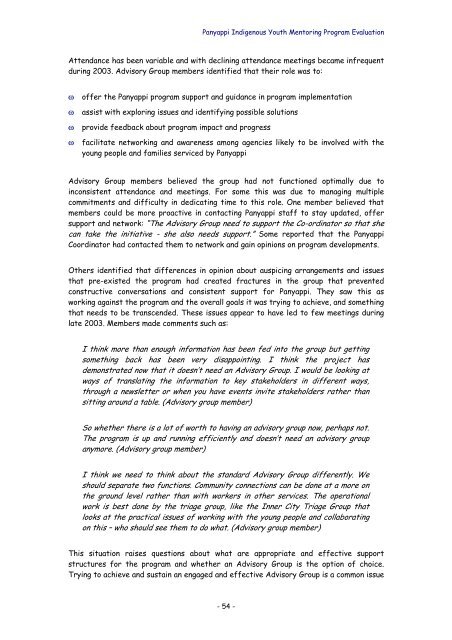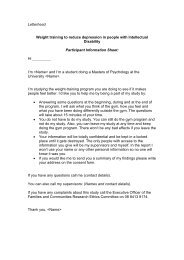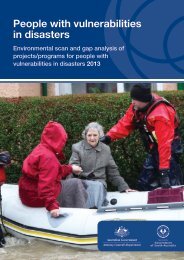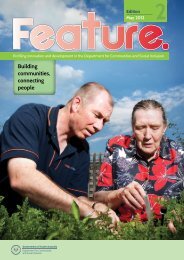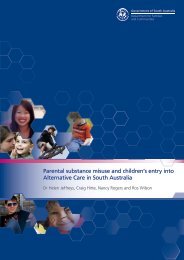Panyappi Indigenous Youth Mentoring Program Evaluation
Panyappi Indigenous Youth Mentoring Program Evaluation
Panyappi Indigenous Youth Mentoring Program Evaluation
You also want an ePaper? Increase the reach of your titles
YUMPU automatically turns print PDFs into web optimized ePapers that Google loves.
<strong>Panyappi</strong> <strong>Indigenous</strong> <strong>Youth</strong> <strong>Mentoring</strong> <strong>Program</strong> <strong>Evaluation</strong><br />
Attendance has been variable and with declining attendance meetings became infrequent<br />
during 2003. Advisory Group members identified that their role was to:<br />
ω<br />
ω<br />
ω<br />
ω<br />
offer the <strong>Panyappi</strong> program support and guidance in program implementation<br />
assist with exploring issues and identifying possible solutions<br />
provide feedback about program impact and progress<br />
facilitate networking and awareness among agencies likely to be involved with the<br />
young people and families serviced by <strong>Panyappi</strong><br />
Advisory Group members believed the group had not functioned optimally due to<br />
inconsistent attendance and meetings. For some this was due to managing multiple<br />
commitments and difficulty in dedicating time to this role. One member believed that<br />
members could be more proactive in contacting <strong>Panyappi</strong> staff to stay updated, offer<br />
support and network: “The Advisory Group need to support the Co-ordinator so that she<br />
can take the initiative - she also needs support.” Some reported that the <strong>Panyappi</strong><br />
Coordinator had contacted them to network and gain opinions on program developments.<br />
Others identified that differences in opinion about auspicing arrangements and issues<br />
that pre-existed the program had created fractures in the group that prevented<br />
constructive conversations and consistent support for <strong>Panyappi</strong>. They saw this as<br />
working against the program and the overall goals it was trying to achieve, and something<br />
that needs to be transcended. These issues appear to have led to few meetings during<br />
late 2003. Members made comments such as:<br />
I think more than enough information has been fed into the group but getting<br />
something back has been very disappointing. I think the project has<br />
demonstrated now that it doesn’t need an Advisory Gr oup. I would be looking at<br />
ways of translating the information to key stakeholders in different ways,<br />
through a newsletter or when you have events invite stakeholders rather than<br />
sitting around a table. (Advisory group member)<br />
So whether there is a lot of worth to having an advisory group now, perhaps not.<br />
The program is up and running efficiently and doesn’t need an advisory group<br />
anymore. (Advisory group member)<br />
I think we need to think about the standard Advisory Group differently. We<br />
should separate two functions. Community connections can be done at a more on<br />
the ground level rather than with workers in other services. The operational<br />
work is best done by the trage i group, like theInner City Triage Group that<br />
looks at the practical issues of working with the young people and collaborating<br />
on this – who should see them to do what. (Advisory group member)<br />
This situation raises questions about what are appropriate and effective support<br />
structures for the program and whether an Advisory Group is the option of choice.<br />
Trying to achieve and sustain an engaged and effective Advisory Group is a common issue<br />
- 54 -


